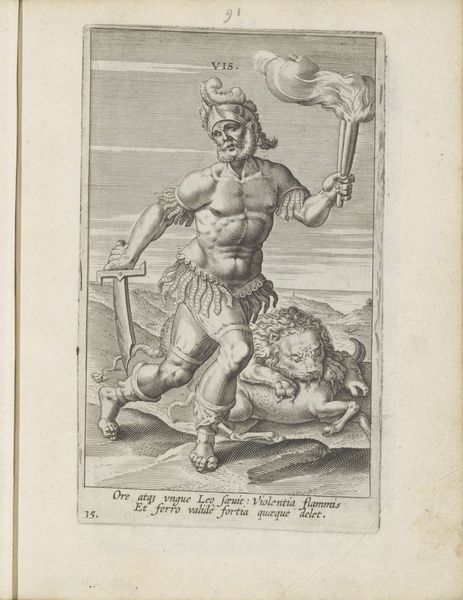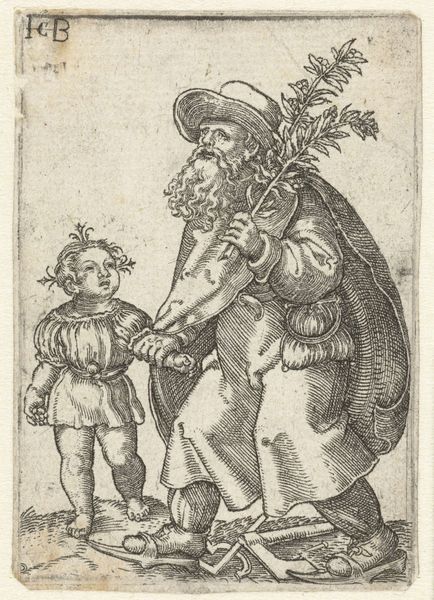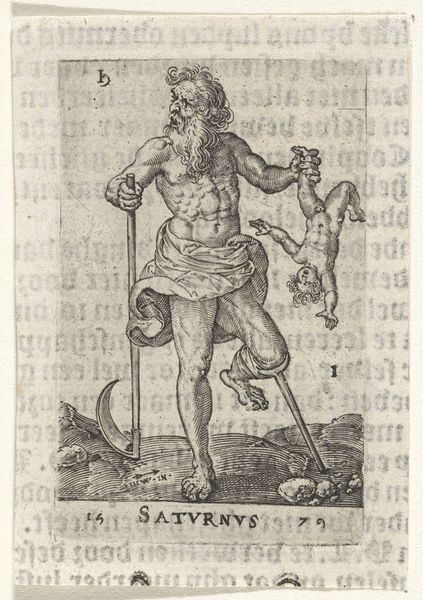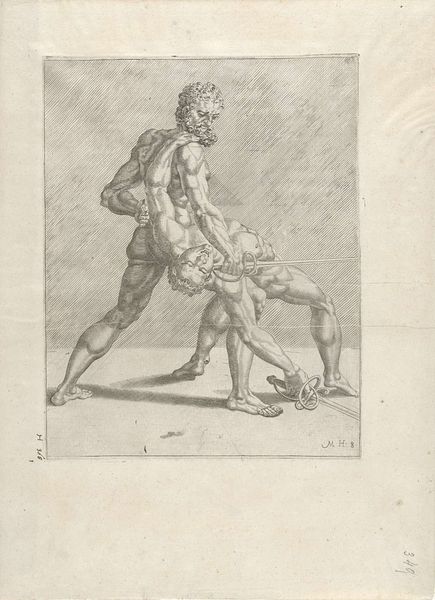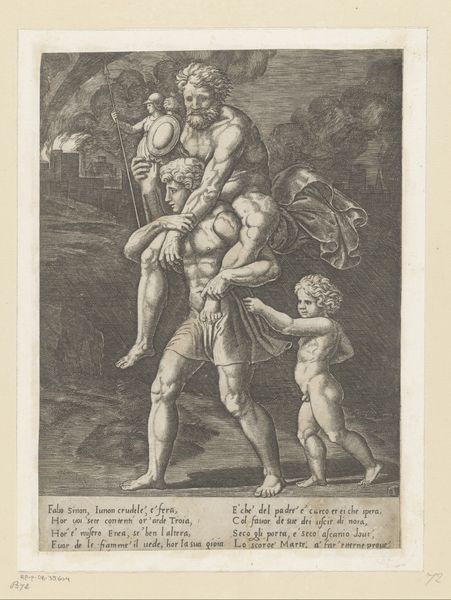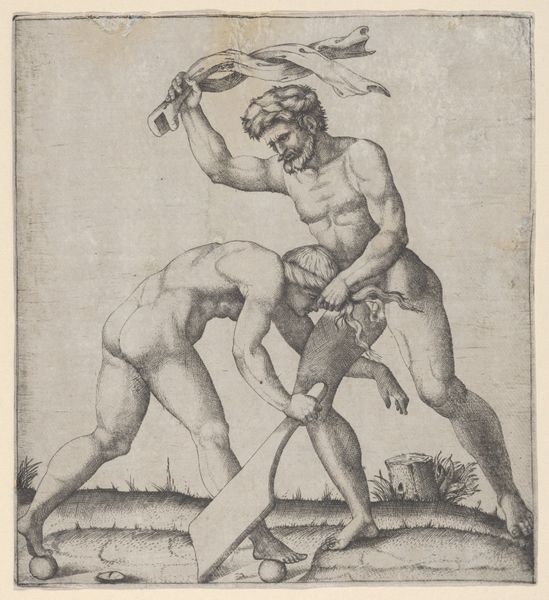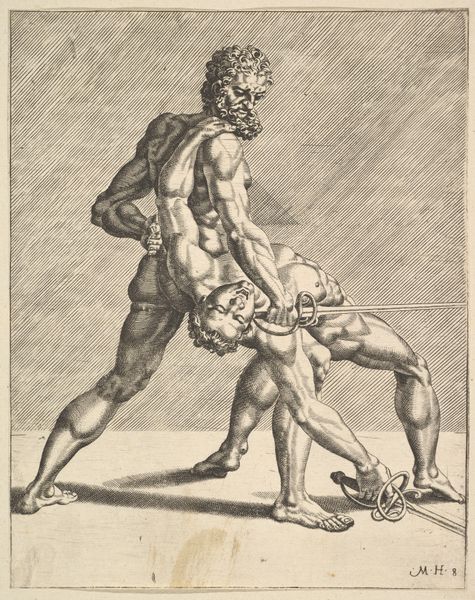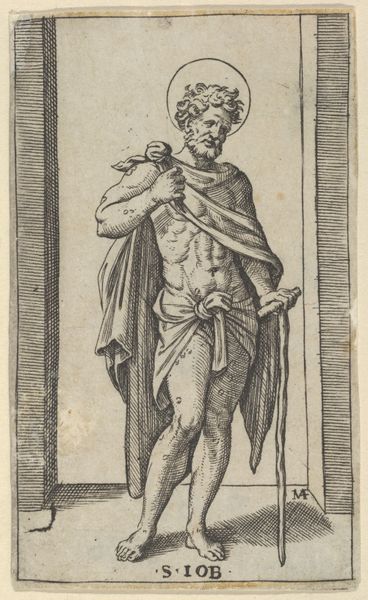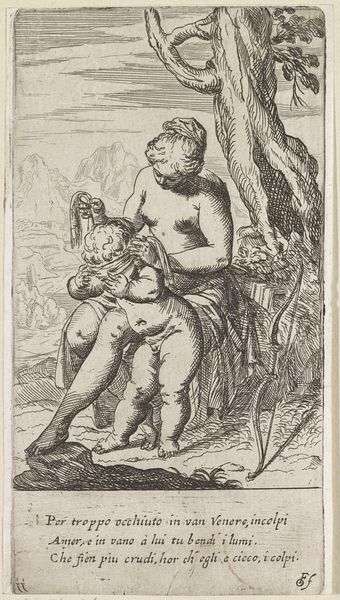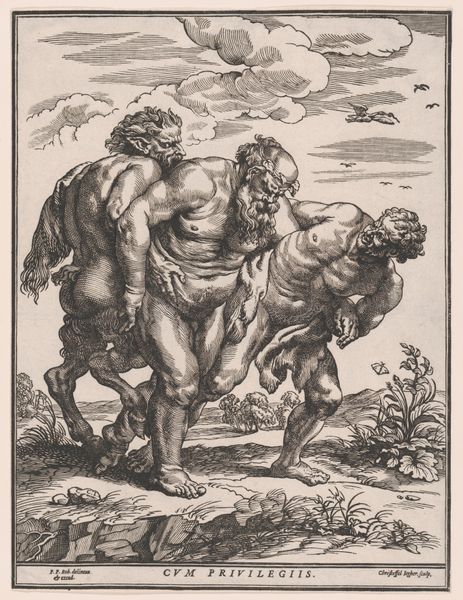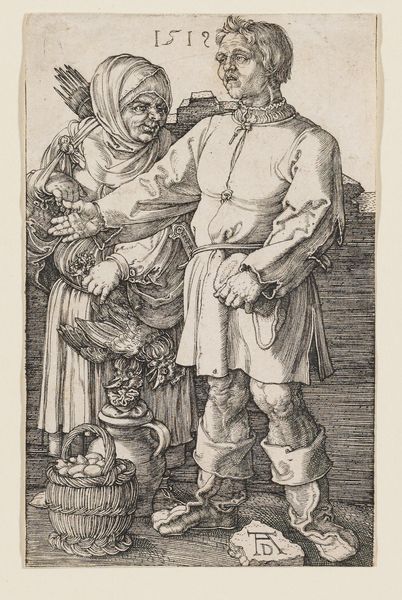
print, engraving
#
narrative-art
# print
#
figuration
#
history-painting
#
italian-renaissance
#
engraving
Dimensions: height 247 mm, width 191 mm
Copyright: Rijks Museum: Open Domain
Curator: Here we have Giovanni Jacopo Caraglio's engraving, dating from 1515 to 1565, entitled "Aeneas fleeing Troy with his Family". What's your immediate response to it? Editor: Melancholy. Aeneas burdened, the weight visible in his posture. Even the child has a downcast gaze. Curator: The scene depicts Aeneas carrying his father, Anchises, out of the burning city, while his son, Ascanius, walks beside them. This is, of course, a cornerstone of Roman foundation mythology. It's loaded with symbolic baggage! Editor: Absolutely. Aeneas embodies piety and duty. Carrying his father signifies honoring tradition, but escaping Troy also means turning your back on the old order. It highlights the complex choices inherent in founding new societies after devastation, but also patriarchal systems of succession, too. Curator: Yes, there's the literal weight, Anchises represents lineage. Ascanius carries the flame of their heritage, representing hope for the future. Visually, consider the contrast: Aeneas is a powerful, nearly nude figure, bearing his draped father, while Ascanius holds onto a covered relic. These contrasts feel psychologically intentional. Editor: Caraglio made this during the Renaissance, after all. This is a deliberate staging of masculinity, of showing grief and the need for perseverance amidst a political message of building an empire. Note how even their vulnerability in flight serves to emphasize stoicism, sacrifice, and duty in face of disaster. This engraving certainly encourages complex interpretations. Curator: Indeed, by re-presenting this pivotal scene, the artist taps into archetypal narratives of destruction and rebirth. It shows how myths of origin get visually re-entrenched through printmaking technologies like engraving. It definitely evokes the heavy responsibility that cultural memory places on survivors. Editor: Looking closely now, it's intriguing how even with these clearly defined heroic forms, there's still a pronounced fragility conveyed via the shading and the careful etching of each figure. It challenges, I think, the standard idea of Renaissance heroes. Curator: It does make the mythology of the moment less solid, in a way. I see an insistence of the engraving upon a set of enduring ideals of virtue and continuation. Editor: Ultimately, the work is about negotiating legacies. Caraglio prompts us to wonder: what is the weight of history?
Comments
No comments
Be the first to comment and join the conversation on the ultimate creative platform.

